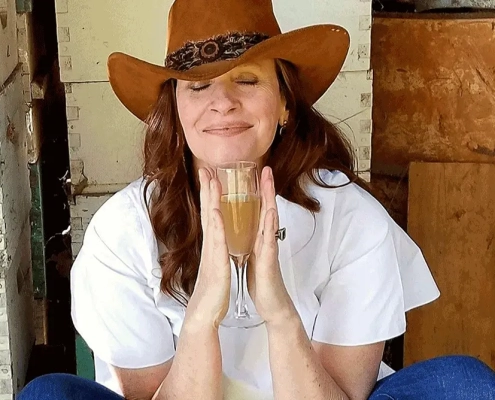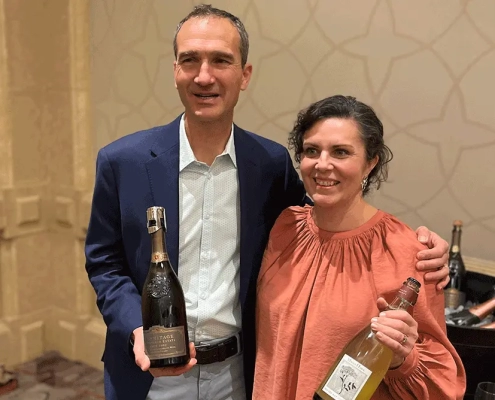California Pet Nat Sparkling Wine
The Difference From Méthode Champenoise
The world of sparkling wine production is vast and diverse, with various methods yielding distinct styles and flavors. Among these, Petillant Naturel, or Pet Nat, stands out as one of the oldest and most intriguing approaches. In contrast to the traditional Method Champenoise, Pet Nat offers a unique journey from grape to glass, showcasing its own set of characteristics and complexities.
At its core, both Pet Nat and Method Champenoise involve a natural process of fermentation in the bottle, leading to the delightful effervescence that defines sparkling wine. However, their paths diverge in significant ways.

Fathers + Daughters Proprietor Sarah Schoeneman
In the traditional Méthode Champenoise, the base wine undergoes primary fermentation, after which it is bottled with additional sugar and yeast. This triggers a second fermentation in the bottle, during which carbon dioxide is trapped, creating bubbles. The wine then undergoes a lengthy process of aging, riddling, and disgorging to remove sediment and achieve clarity.
On the other hand, Pet Nat takes a more rustic and spontaneous approach. The primary fermentation begins in a tank or barrel, similar to still wine production. However, unlike Méthode Champenoise, Pet Nat is bottled under a crown cap (like beer) before primary fermentation is complete, capturing the natural carbon dioxide produced by yeast. This results in a slightly effervescent wine with a characteristic cloudiness and sediment as the yeast remains in the bottle.
The presence of yeast in Pet Nat not only contributes to its unique appearance but also influences its flavor profile. The yeast imparts additional complexity and depth, leading to a wine that is often more vibrant and alive on the palate. With its minimal intervention approach, Pet Nat allows the wine to express its terroir and varietal characteristics in a raw and unadulterated manner.
Moreover, the Pet Nat method offers practical advantages for winemakers. By bypassing the labor-intensive processes of riddling and disgorging, Pet Nat wines can be brought to market years sooner than traditional sparkling wines. Additionally, the simplicity of production requires less specialized equipment, making it accessible to a wider range of producers.
As interest in both sparkling wine and natural wine categories continues to grow, Pet Nat is experiencing a resurgence in popularity. Winemakers like Sarah Wuethrich of Maggy Hawk have embraced the challenge and creativity that comes with producing Pet Nat, incorporating it into their portfolios with pride.
“What started off as an experimental wine became a full-time part of the Maggy Hawk line-up, and I couldn’t be more proud.I enjoy challenges, experimentation, innovation and “going against the grain”- making the Pet Nat definitely gives me all of these things each harvest. Picking, pressing, fermenting, bottling with as little intervention as possible- just the basics- reminds me that wine can be so simple, yet so complex. Each bottle is its own unique “individual” with different characteristics and evolving at its own pace.” Maggy Hawk winemaker Sarah Wuethrich

Roederer Winemaker Arnaud Weyrich & Maggy Hawk Winemaker Sarah Wuethrich



